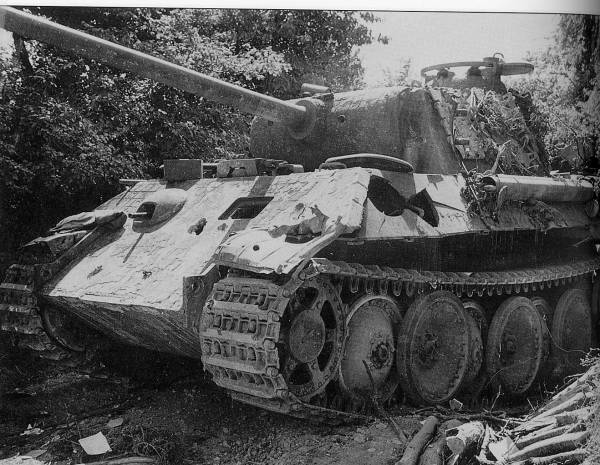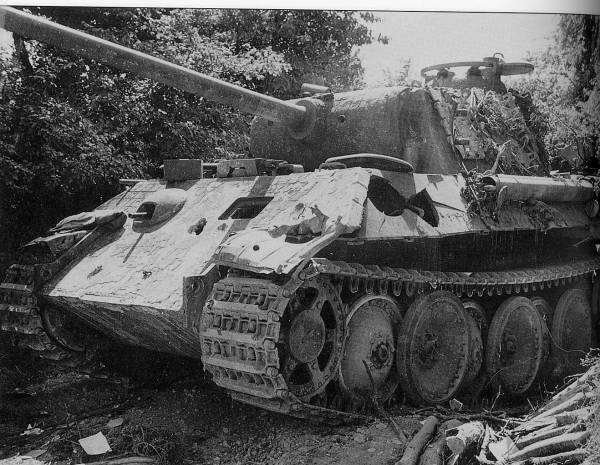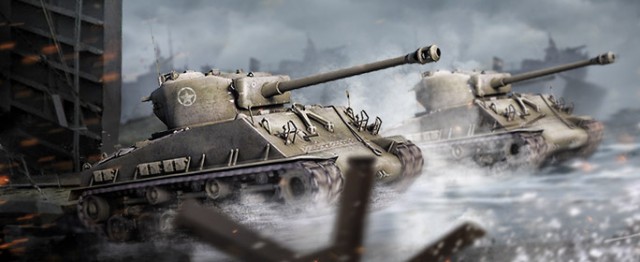The article at hand will not bring the classical overview of the Normandy landings from the Allied perspective as is often done. On the contrary, we aim to provide you with a unique view on the status of the German Panzertruppen, the ‘tank corps’, that is, before and during the Normandy landings.
We strive to commemorate the 70th Anniversary of D-Day through the sharing of new knowledge.
A small historical recap – the Allied Invasion:
The Invasion of Normandy was the invasion and establishment of Allied forces in Normandy, France.
The Normandy landings were the largest seaborne invasion in history, with nearly 5,000 landing and assault craft, 289 escort vessels, and 277 minesweepers participating.
The landings began with Operation Neptune, commonly known as D-Day.
Originally planned to take place on 1 May 1944, the operation was postponed by a month to allow time to gather more troops and equipment. It was then scheduled for 5 June 1944 but, even then, last minute bad weather delayed it until the following day.
Nearly 160,000 troops crossed the English Channel on D-Day with 875,000 men disembarking by the end of the month.
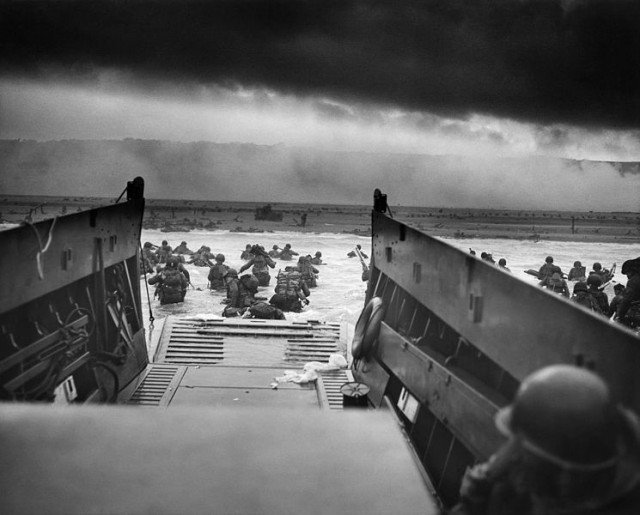 Into the Jaws of Death by Robert F. Sargent. Assault craft land one of the first waves of troops at Omaha Beach.
Into the Jaws of Death by Robert F. Sargent. Assault craft land one of the first waves of troops at Omaha Beach.
To keep the destination of the landings secret, a deception plan, Operation Fortitude, was mounted which led the Germans to believe that the main target was the Pas de Calais (Fortitude South)
When the landings finally began, only 14 of the 50 German divisions in France faced the Allies. Resistance was hard on most beaches, yet Omaha was the only one where the success of the Allied mission was in serious doubt.
Even though the Allies failed to achieve all of their goals on the first day, they had still gained a foothold that they gradually expanded over the coming months, which eventually greatly contributed to an Allied victory in the war.
Now let’s have a look at the other side of the landings and, namely, what hindered the German armies in the Normandy. What were the effects on the the Panzertruppen? (Arguably the most threatening German army branch for the Allies) In order to find out, we will look to General Heinz Guderian and some of his reports as the main premise of this write up.
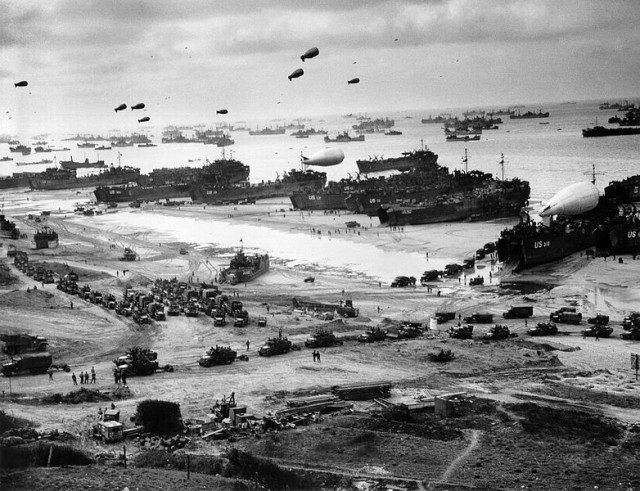 Tank-landing ships unloading supplies on Omaha Beach, preparing for the break-out from Normandy
Tank-landing ships unloading supplies on Omaha Beach, preparing for the break-out from Normandy
The situation in Normandy – the German perspective
Prior to the Normandy landings, Germany had at its disposal 50 divisions in France and the Low Countries. Of that number, nine Panzer Divisions and an SS Panzergrenadier Division were stationed in the West when the Allies landed in Normandy on 6 June 1944.
Only three of these divisions were available to repel the lading, that is, to face D-Day in full battle readiness.
The remaining six divisions were still being refitted after their pulling out from the Eastern Front and, as such, did not meet the Normandy landings at full strength. Status reports often vary, as additional Panzers were commonly added to a unit right before combat.
On 19th June 1944, General Guderian sent a tactical analysis report to Hitler, reporting some of the main issues the Panzer units had encountered since the Invasion of Normandy had started.
Below you can find an edited version of some of the main problems troubling the Panzer Korps that were operating during the Battle for Normandy. Our comments are in bold and italics after each section:
(i) On the Employment of Panzer Units on the Invasion Front up to 10 June
- The enemy fights by completely exploiting his air supremacy and his material superiority. He is aggressive but not so aggressive that it is costly.
– What does this mean? Well, by June 1944, the Kriegsmarine (the German Navy) was blockaded with its main forces unusable at the Normandy front. With the Luftwaffe (the German Airforce) all but crippled, the Wehrmacht had basically lost its two major support branches and thus received a huge tactical blow.
- Because of the enemy command of the skies, Panzer units arriving by road are especially short in fuel
– The British followed through with their attrition tactics previously used in North Africa which meant that the German supply line was seriously endangered if not hindered altogether, causing severe shortages of war material.
- The Arrival of the Tiger-Abteilung of the I.SS Panzer Korps was first expected at noon on 10 June. It was delayed because of the enemy command of the air. Every attempt to march during the day resulted in numerous burned-out vehicles on the road
– Without proper air support provided by the Luftwaffe, Panzer convoys were forced to travel at night to avid air raids, response time was thus severely delayed.
(ii) On the Possibility of Eliminating the Enemy Beachhead with the Available Panzer Forces.
- It does not appear to be possible to throw the Allies back into the sea with their present forces and equipment as long as:
- a) The guns from about 60 to 70 warships can fire undisturbed with aircraft spotters
- b) The effect of the Allied airforce can be concentrated unhindered on this limited space.
– The massive naval formation the Allies had brought with them to Normandy enabled them to support their units from both sea and air. To further hinder German efforts, they could focus that massive firepower in a relatively small area.
(iii) No more panzer units may be sent into combat against the beachhead than can be resupplied at any given time.
- Supplies still have not been guaranteed for the three Panzer Divisions that have already been committed.
– According to Guderian, there were not enough provisions to resupply more than the 3 previously mentioned divisions. This was an undisputed indicator of the supply status amongst the German ranks in 1944.
Alternatively, Guderian advised supplying the already engaged Panzer Divisions with personnel and material, in order to ensure their high combat power. The above report snippets clearly outline the Allied supremacy in both supply and support that further suppressed the effectiveness of the Panzer Divisions stationed in Normandy.
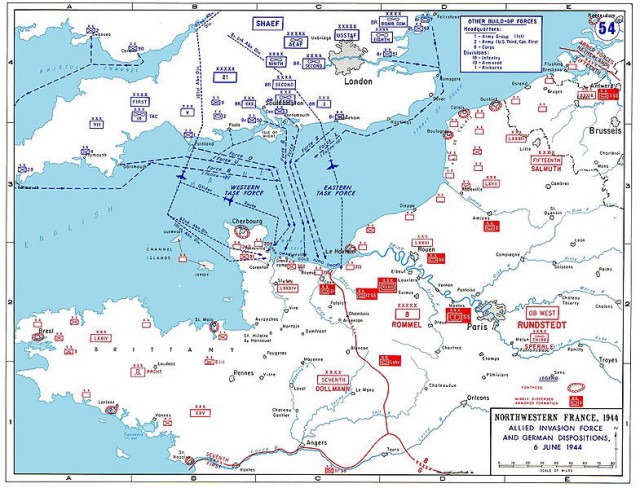
Allied invasion plans and German positions in Normandy.
Guderian’s conclusion was that, despite “facing an enemy superior in equipment”, his units, and therefore all German troops, would eventually prevail in the Battle for Normandy, namely due to their “the advanced fighting spirit”. He believed in the superiority of his men over the Allies.
The same belief was employed by the Japanese army leadership as well – reliance on morale and fighting spirit over the influence of equipment, supplies and numerical advantage was a proven failure in both cases. Reliance on a factor that is prone to fluctuations makes for a very uneasy strategic standpoint.
Additionally this viewpoint often lacked insight into the motivation, morale conditions and fighting spirit of the opposing armies, whom, in the case of Normandy, as well in many other cases, were very motivated to complete their objectives.
1944 and the Battle for Normandy have highlighted the toll that Germany had paid for fighting such a prolonged war. Clear evidence to the fact that Germany, as well as the Axis as a whole, did not possess the provisions for a long and lengthy war effort, as both the lack of personnel* and equipment were clearly displayed during the Normandy Invasion.
*German records, in fact, indicate that the average personnel complement was at about 50% in the spring of 1944.
Just to give you an example for the supply status of the Allies, let’s use Britain’s fuel supply as our point of reference: in 1939 Britain’s fuel stocks amounted to 7 million tons. After two years of full scale war, stock still remained at 4.5 million tons in 1941!
Thus history repeated itself, with Germany entering a war it could not win in the long run.
What does the “D” in D-Day stand for?
The “D” does not stand for “Deliverance”, “Doom”, “Departure” or anything similar – the “D” comes from the word “Day”. “D-Day” means the day on which a military operation begins.
When a military operation is being planned, its actual date and time is not always known exactly. The term “D-Day” was therefore used to mean the date on which operations would begin, whenever that was to be.
Discuss this article and all things military with other WWII enthusiasts on the World of Tanks forum
Join millions of other warfare enthusiasts and battle across levels inspired by historical locations at WARGAMING website

